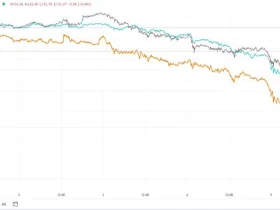The Canadian economy was virtually unchanged in June, shedding 1,400 jobs, while unemployment rose 0.2 percentage points to 6.4 per cent, Statistics Canada said Friday.
Employment fell for young people between the ages of 15 and 24, with 13,000 jobs lost, while for women aged 25 to 54 it rose by 19,000 jobs.
Fewer people worked in transport, housing and public administration, while jobs were added to the food services and accommodation sector as well as the agriculture sector.
Average hourly wages rose 5.4 percent in June compared to the same time last year and were up from 5.1 percent in May.
“This report drives home the point that the Canadian labor market simply cannot be considered tighter — in fact, it is quickly turning in the other direction,” BMO economist Douglas Porter wrote in a note.
He noted that a softer labor market increases the chances of a Bank of Canada rate cut. But the central bank has also been keeping a close eye on wage growth, which “remains the very definition of sticky [and] will give the Bank pause,” Porter wrote.
The youth unemployment rate was “particularly painful” in June, Porter added. That rate, for people between 15 and 24, rose 0.9 percentage points to 13.5 percent last month.
It is the highest rate it has been since September 2014, with exceptions made for 2020 and 2021 due to the pandemic.
A tough summer job market for students
To that point, the summer job market is getting trickier to navigate for some students.
The employment rate among returning students — those trying to find summer jobs before returning to school full-time in the fall — fell to 46.8 percent.
This marks the lowest rate since June 1998, with the first summer of the pandemic (June 2020) being an exception. It is also a “significant decline” from the high 53.7 percent reported in June 2022, the data agency said.
The unemployment rate for these students was 15.9 percent, marking an increase of 3.8 percentage points from a year ago. Data show that students have more difficulty finding work in the summer labor market.
“I think in general, when you look at the ups and downs of the labor market, young people are more sensitive,” said Brendon Bernard, an economist at Indeed Canada.
“When the labor market strengthens, young people really benefit. And when things weaken, we see that they’re the ones who get hit. And so over the last year or so, we’ve seen the number of Canadian jobs deteriorate and they have worsened particularly among those 15 to 24,” Bernard said.
Image Source : https://www.pexels.com/







Leave a Reply